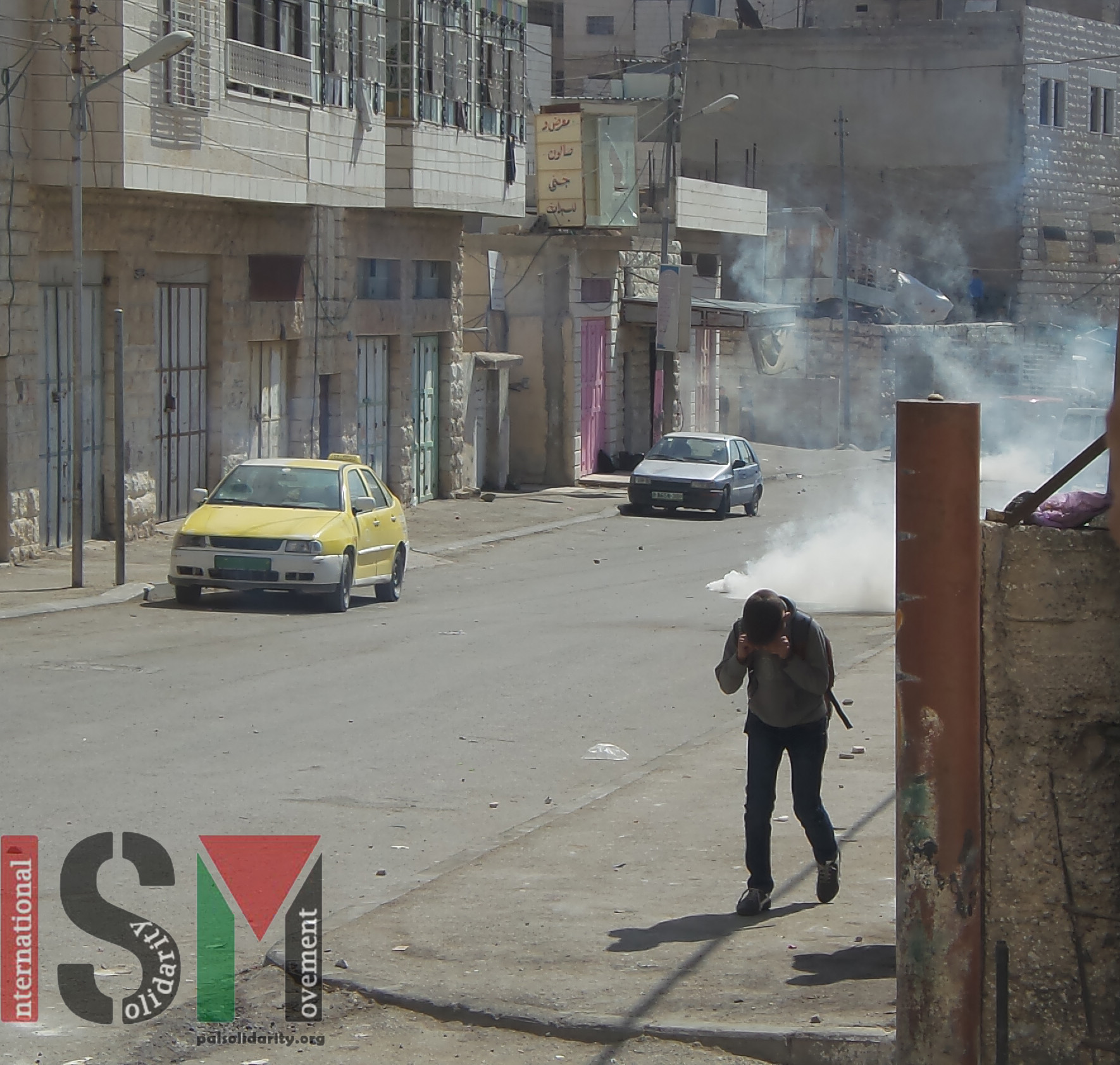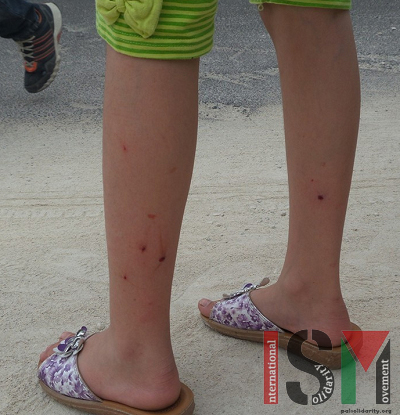Tag: Tear Gas
-
Tear gas and stun grenades used against schoolchildren
13th October 2014 | International Solidarity Movement, Khalil team | Hebron, Occupied Palestine Today at the Salaymeh checkpoint in al-Khalil (Hebron), Israeli soldiers fired four long-range tear gas canisters, and threw three stun grenades, all towards children leaving school to walk home. One tear gas grenade was also thrown directly at ISM activists documenting the military violence.…
-
Two arrests, three detentions and over 100 tear gas grenades used against children in Hebron since the school year began
2nd October 2014 | International Solidarity Movement | Hebron, Occupied Palestine “The child are having problems concentrating on their school work due to their emotional state and the stress due to the daily attacks by the occupation forces, which are continuously escalating.” Stated Hebron teacher, Shukri Zaroo, to the International Solidarity Movement (ISM). Children in al-Khalil (Hebron)…
-
Violence and detention of children in Hebron
28th September 2014 | International Solidarity Movement, Khalil team | Hebron, Occupied Palestine This afternoon Israeli border police entered through Salaymeh checkpoint and fired 14 tear gas grenades and one stun grenade at children leaving school. Several teenagers threw stones towards the checkpoint and the soldiers began firing tear gas. An ISM activist present stated, “Four young girls were walking past the boys throwing…



